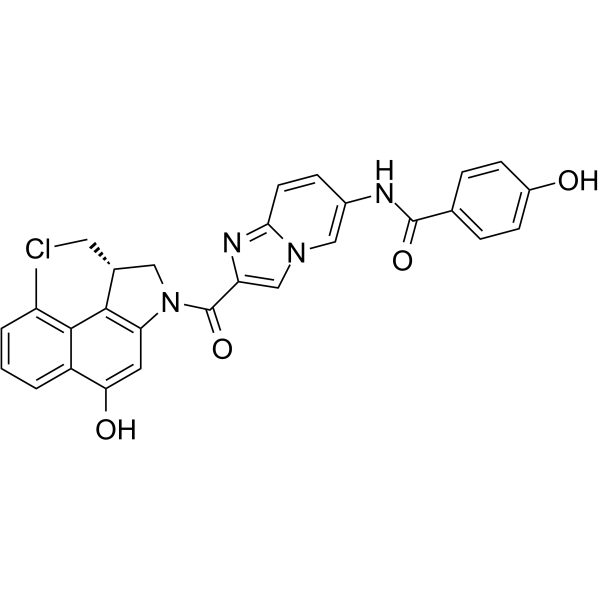Seco-DUBA
Modify Date: 2024-01-06 20:26:06

Seco-DUBA structure
|
Common Name | Seco-DUBA | ||
|---|---|---|---|---|
| CAS Number | 1227961-59-2 | Molecular Weight | 526.97 | |
| Density | N/A | Boiling Point | N/A | |
| Molecular Formula | C29H23ClN4O4 | Melting Point | N/A | |
| MSDS | N/A | Flash Point | N/A | |
Use of Seco-DUBASeco-DUBA is a duocarmycin (DUBA) prodrug containing two hydroxyl groups, which can each be used for coupling to an antibody via a linker. Seco-DUBA can be used in the synthesis of antibody-drug conjugates (ADCs)[1]. |
| Name | Seco-DUBA |
|---|
| Description | Seco-DUBA is a duocarmycin (DUBA) prodrug containing two hydroxyl groups, which can each be used for coupling to an antibody via a linker. Seco-DUBA can be used in the synthesis of antibody-drug conjugates (ADCs)[1]. |
|---|---|
| Related Catalog | |
| In Vitro | Seco-DUBA (SK-BR-3 cells; 0.0001 pM~0.01 nM; 144 hours) dose-dependent reduces cell viability and shows equally potent and efficacious as DUBA[1]. Seco-DUBA causes SK-BR-3 (IC50=0.09), SK-OV-3 (IC50=0.43), and SW620 (IC50=0.09) cells to exhibit highly sensitive[1]. Cell Cytotoxicity Assay[1] Cell Line: SK-BR-3 cells Concentration: 0.0001 pM~0.01 nM Incubation Time: 144 hours Result: Dose-dependent reduced cell viability. |
| In Vivo | Seco-DUBA (89 μg/kg; i.v.) is likely converted to DUBA almost instantaneously[1]. Animal Model: Wistar rats[1] Dosage: 89 μg/kg (Pharmacokinetic Analysis) Administration: I.v. Result: Likely converted to DUBA almost instantaneously. |
| References |
| Molecular Formula | C29H23ClN4O4 |
|---|---|
| Molecular Weight | 526.97 |